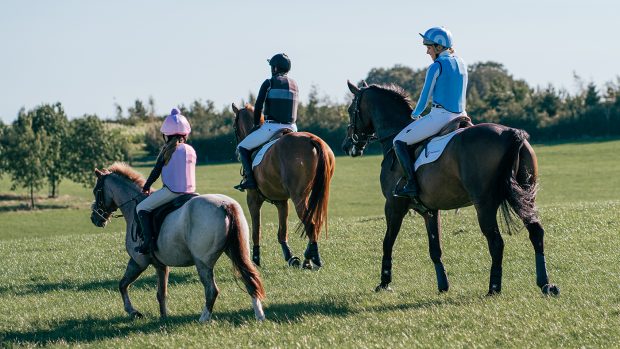Q: I do not allow my children to ride their ponies without hats and body protectors, but why are body protectors only compulsory in cross-country competitions? Why not for other disclipines, particularly show jumping?
SO, Oxon
THE rules relating to body protectors vary according to discipline. The BSJA rulebook states that, under Rule 101.3, body protectors are optional.
Under British Eventing (BE) rules, it is compulsory for competitors to wear a body protector for the cross-country phase.
“Level three body protectors are specifically recommended for event riders, but it is advised that the body protector chosen should impede neither flexibility nor balance,” explained Liza Randall, BE’s communications manager.
In driving trials, another fast-paced sport, the British Horse Driving Trials Association (BHDTA) recommends that body protectors are worn for all age groups, but does not make it compulsory.
Leading competitor Georgina Frith has worn a body protector since she moved up to driving horses from ponies.
“I wouldn’t consider driving a marathon without one now,” she said.
“I make my crew wear them too — you have to accept there’s a possibility of being thrown off at speed, or being crushed by the hazard you are trying to avoid.”
In terms of showing classes, Adrianne Smyth, board member of the British Show Horse Association (BSHA), says there is nothing in the rules that prohibits the wearing of back protectors.
“All competitors in BSHA classes have to be 15 years or over, so the protection of small children is not an issue,” she explained.
“However, because the judge rides the exhibits, we do expect them to be produced and trained to give safe and well-schooled rides. This is quite different from a novice horse, where a back protector would be a sensible precaution.”
David Woodd, chief executive of the Hurlingham Polo Association, said that in polo there is considerable physical contact between players, so their safety and protection is important.
“Players have to wear kneepads and an increasing number are wearing elbow protection, but body protectors are not generally worn,” he stated.
“There is no evidence to suggest a need for body protectors to be worn, and, as freedom of movement is very important, we let players make their own choice.”
The sport of endurance also leaves riders to make their own decisions.
“The sport necessitates long hours in the saddle, hence comfort and flexibility for the rider are essential,” said Endurance GB (EGB) spokesman Stephen Bennett.
Rule 42 of the British Dressage (BD) rulebook states that body protectors may be worn.
“It is up to the individual to take responsibility for judging whether the rider needs to wear one or not,” said David Holmes, BD’s chief executive.
When buying a body protector, choose a BETA-qualified stockist to advise on fit and safety standards.
Information
BETA www.beta-uk.org
This Q&A was first published in Horse & Hound (26 June, ’08)



